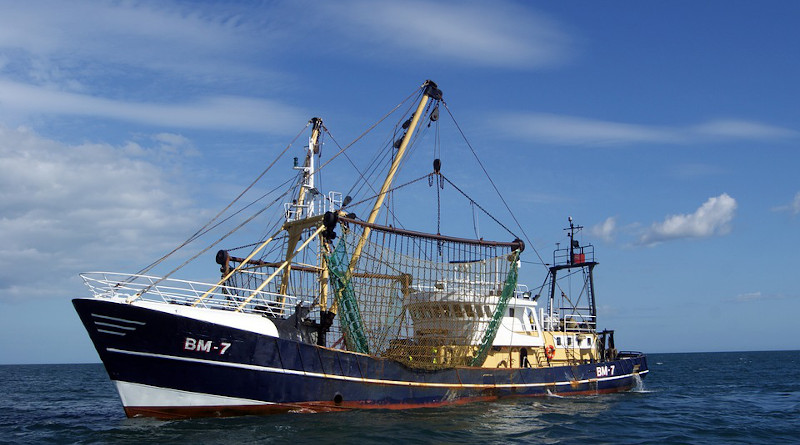Warmer Ocean Temperatures Increase Risk Of Salmon Bycatch In Pacific Hake Fishery
Rates of Chinook salmon bycatch in the Pacific hake fishery rise during years when ocean temperatures are warmer, a signal that climate change and increased frequency of marine heatwaves could lead to higher bycatch rates, new research indicates.
During years when sea surface temperatures were higher, including during a marine heatwave, Chinook salmon were more likely to overlap with the Pacific hake and raise the risk of bycatch as they sought refuge from higher temperatures.
The findings, based on 20 years of bycatch data and ocean temperature records, provide new insight into the ecological mechanisms that underlie bycatch, which is the incidental capture of a non-targeted species, said the study’s lead author, Megan Sabal.
“The impact of ocean warming on bycatch has potential cultural, economic and ecological consequences, as the hake and salmon fisheries are each worth millions of dollars and salmon are critical to both Indigenous tribes’ cultural heritage and healthy ecosystems,” said Sabal, who worked on the project as a postdoctoral scholar at Oregon State University.
Pacific hake, also known as Pacific whiting, is the largest commercial fishery by tonnage on the U.S. West Coast. The rate is low but bycatch remains a concern for the Chinook salmon population, said Michael Banks, a marine fisheries genomics, conservation and behavior professor at Oregon State University and a co-author of the study.
“The hake fishing industry is very sensitive to the impacts of bycatch on salmon and has been diligent in reducing it, but changing climate conditions might become an increasing issue,” he said.
The research was just published in the journal Fish and Fisheries.
Pacific hake school in midwater depths off the West Coast from southern Baja California to the Gulf of Alaska. Hake is commonly used in surimi, a type of minced fish used to make imitation crab.
Most hake fishing occurs at depths of 200 to 300 meters and Chinook salmon typically occupy more shallow depths. If changing water temperature affects salmon distribution, that could increase salmon bycatch, the researchers noted.
“Developing a mechanistic understanding of how environmental conditions might impact bycatch can help us prepare for the future and think about how to adapt current strategies to keep up with a changing world,” said co-author Kate Richerson of the National Oceanic and Atmospheric Administration’s Northwest Fisheries Science Center Newport Research Station.
To better understand the impacts of changing ocean conditions, the researchers tapped into 20 years of data collected through NOAA’s At-Sea Hake Observer Program. Observers are placed aboard hake catcher-processor vessels and motherships that receive catch to process and record information about fishing depth and location, species composition and more.
Sabal and her coauthors modeled observer data and genetic stock identification to show salmon moving lower into the water column during higher temperatures.
“These behavioral changes can provide important information for researchers and can also inform creative conservation solutions,” Sabal said.
The researchers also found that limiting night fishing, a common mitigation strategy to reduce bycatch, will likely become less effective when sea surface temperatures are warmer near the surface.
The findings suggest that new strategies may be needed to continue mitigating bycatch in the hake fishery, Banks said. As technology improves, fishermen and fishery managers might be able to forecast bycatch impacts based on real-time ocean condition information and make adaptive management decisions about fishing strategy based on those conditions.
“As the oceans and the world are changing, the conflict between the two fisheries is showing up in new ways,” he said, “and we may need to shift strategies based on this understanding.”

